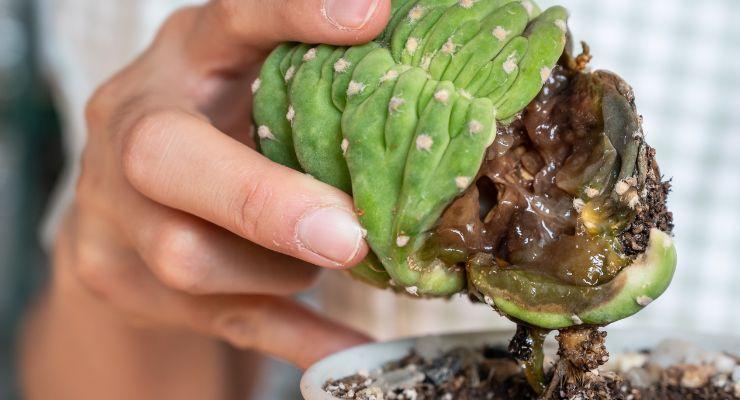Cactus root rot is a common problem that affects many cactus owners. It occurs when the roots of the cactus become waterlogged, causing them to rot and die.
This can lead to a range of symptoms that can seriously harm your cactus plant, including severe wilting, discoloration, and even plant death. In this article, we will provide a comprehensive guide to understanding cactus root rot, including its symptoms, causes, prevention, treatment, and recovery.
Cacti are beloved for their ability to withstand extreme conditions, but they can be susceptible to root rot when exposed to overly wet climates. To ensure vigorous and healthy roots, cactus owners must recognize the signs of root rot and take necessary measures swiftly to prevent its spread.
With proper treatment, your cactus will rebound gracefully from this condition and provide you with years of joy!
Symptoms of Cactus Root Rot
Cactus root rot is a common issue that can cause serious damage to your plant. It’s important to recognize the symptoms of root rot early on so you can take action to treat it. Some common symptoms of cactus root rot include:
Change in Color
If you’ve noticed your cactus beginning to change color, it could be an omen of root rot. Typically, healthy cacti feature either a green or blue-green color so if this has shifted away, it is likely indicative of an issue that demands prompt attention.
Bad Smell
In case your cactus has started to emit a bad smell, it’s a sure sign that something is wrong. This could be a result of root rot, which causes the roots to break down and emit a foul odor.
Soft Segments in the Plant
If you notice that the segments of your cactus are becoming soft and squishy, It’s an indication that your plant likely has rotting roots. This could indicate that the plant’s roots have become waterlogged and are starting to break down.
Severe Wilting and Drooping
Wilting and drooping cacti could be a red flag indicating root rot as well. This is because the roots are unable to absorb water and provide the necessary support to the plant.
Cactus Stem Discoloration
If you notice that the stem of your cactus has started to change color, it could be a sign of root rot. This could indicate that the stem is starting to break down due to the presence of harmful fungi or bacteria.
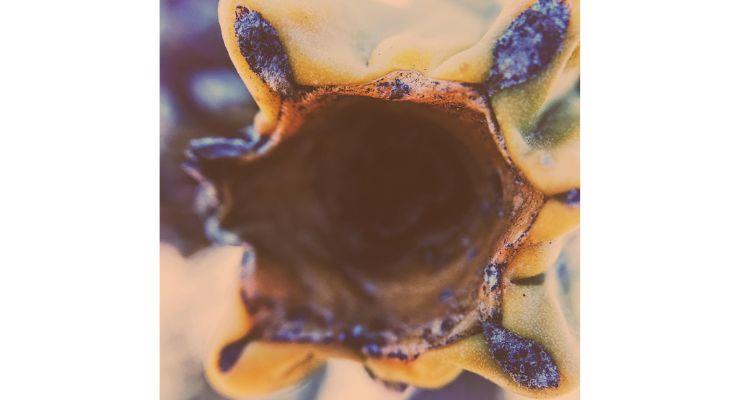
Disintegrating Plant Tissue
Once the plant tissue of your cactus is disintegrating, it’s a sure sign that something is wrong. This could be a result of root rot, which causes the plant tissue to break down and eventually fall off.
Mushy Cactus Roots
If the roots of your cactus are mushy and discolored, it’s a sure sign of root rot. This is because the roots have become waterlogged and are starting to break down, leading to a loss of support for the plant.
Soft or Discolored Spots on Cacti Stems
Pay attention to any soft or discolored spots on the stem of your plant – this could be a signal of rotting cactus. Root rot is caused by fungal and bacterial infections, which break down the stem over time.
Causes of Root Rot in Cactus Plants
Overwatering Cacti
Overwatering is one of the most common causes of root rot in cactus plants. This occurs when the soil is constantly wet, preventing air from reaching the roots, and leading to their decay.
When a cactus is overwatered, the roots are unable to access the necessary oxygen to survive, leading to its death. Overwatering is particularly problematic in pots with poor drainage, as water is not able to drain away properly, leading to root rot.
Poor Drainage Conditions
Poor drainage can also lead to root rot in cactus plants. When soil is too heavy, it can retain too much water, preventing air from reaching the roots, and causing them to decay. This can be caused by an incorrect soil mixture, a pot that is too small, or a lack of drainage holes in the pot.
To avoid poor drainage, it’s important to use a well-draining soil mix, plant cacti in pots with adequate drainage, and allow water to drain away after watering.
Over Fertilizing Cacti
Over-fertilizing cacti can also lead to root rot. Excessive fertilizer can lead to a buildup of salts in the soil, which can damage the roots and lead to their decay.
Additionally, over-fertilizing can lead to an excess of water in the soil, making it more difficult for air to reach the roots and leading to root rot.
For optimal results and to avoid over-fertilization, carefully follow the instructions on your fertilizer package, avoiding fertilizing more frequently than recommended.
Unsuitable Soil Mixture for Cacti Plants
An unsuitable soil mixture can also lead to root rot in cactus plants. Soil that is too heavy, poorly drained, or contains too much organic matter can hold too much water, making it difficult for air to reach the roots and causing root rot.
To prevent this, it’s important to use a well-draining soil mixture specifically designed for cacti or to add sand or perlite to the soil to improve its drainage.
Planting Cacti in Pots with No Drainage Holes
Planting cacti in pots without drainage holes is a common cause of root rot. When there is no place for excess water to go, the roots can become waterlogged, leading to their decay.
To avoid this, it is wise to utilize pots with sufficient drainage or create additional holes in the container if they are not present.
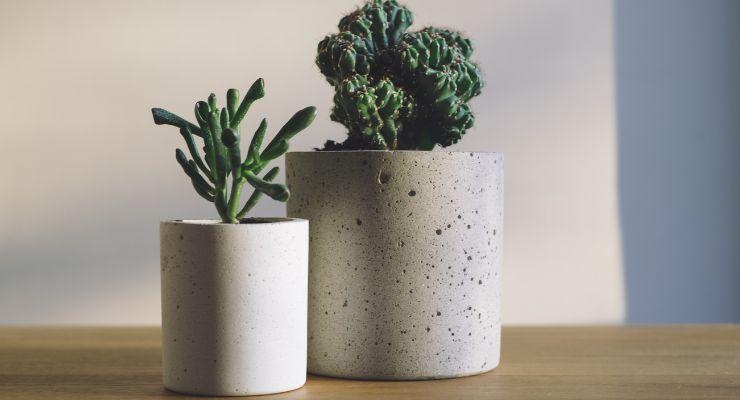
How to Prevent Cactus Root Rot
Water Cacti Properly
Cacti plants should only be watered when the soil is completely dry. This is to prevent overwatering, which can lead to root rot.
When watering, it’s important to fully saturate the soil, but then let it drain thoroughly so the cactus roots are not sitting in water. Make sure to also only water the root zone and not the entire plant or leaves.
Make Sure to Repot Cacti Regularly
To prevent root rot, it’s important to make sure cacti are not root-bound. This means they should be repotted into a larger container every 2-3 years or when you notice roots starting to emerge from the bottom of the pot.
This will give the roots room to grow and prevent overcrowding, which can lead to poor drainage and root rot.
Provide Cacti with Proper Sunlight
Cacti need a lot of sunlight to thrive, so it’s important to place them in a location with bright, direct light. This will help keep the soil from staying too moist and prevent root rot and cactus etiolation. If you live in a hot, humid climate, make sure to provide shade during the hottest parts of the day.
Careful though with too much sun, as too much can cause sunburn in the cacti.
Use a Well-draining Soil
To prevent root rot, it’s important to use a well-draining soil mixture that is specifically designed for cacti. This type of soil will help water drain away from the roots and prevent it from becoming waterlogged.
Avoid using heavy, clay-based soils, which can hold onto too much water and cause root rot.
Use a Pot with Proper Drainage Holes
To prevent root rot, it’s important to make sure your cacti are planted in a pot with proper drainage holes. This will allow excess water to drain away from the roots and prevent them from becoming waterlogged. If your pot doesn’t have drainage holes, consider repotting into a pot that does.
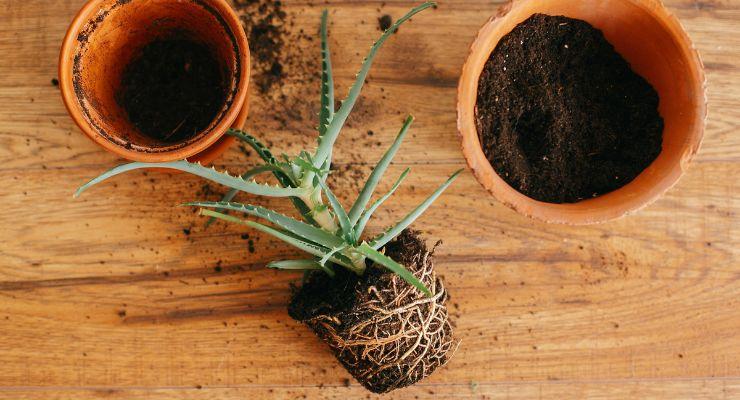
How to Treat Root Rot in Cactus Plants
Remove All Rotted Roots
Removing all of the rotted roots is the first step in treating cactus root rot. This will help the plant absorb nutrients and water effectively once it has recovered. To do this, gently remove the cactus plant from its pot and shake off as much soil as possible. Cut off any mushy or brown cactus roots with a clean, sharp pair of scissors.
Cut Off All Affected Parts
If the root rot has spread to the stem or other parts of the cactus, you will need to cut off any affected sections. Make sure to cut back to healthy, firm tissue. This will help to prevent the spread of the disease and allow the cactus to focus its energy on healing and recovery.
If there is no hope to save the cacti, remove it, before the disease spreads and kill any of your other cacti.
Replace Potting Soil with New One
The next step is to replace the potting soil. It is important to use a well-draining soil mixture to prevent future outbreaks of root rot. If you are using a pot with no drainage holes, make sure to add some to prevent water from standing in the soil and promoting the growth of harmful bacteria.
Let the Cactus Plant Dry Out
After treating the cactus, it is important to let it dry out completely. This will help to prevent further outbreaks of root rot and encourage the cactus to develop a strong, healthy root system. Place the cactus in a well-ventilated area and avoid watering it for several days.
Watering with Hydrogen Peroxide
Watering with a solution of hydrogen peroxide can help to kill any bacteria or fungal spores that may be present in the soil. Mix one part hydrogen peroxide with four parts water, then water the cactus with this solution.
Use Fungicides
Using fungicides is another option for treating cactus root rot. Be sure to follow the instructions on the product carefully, as overuse can harm the cactus.
Dip Roots in Baking Soda Solution
Dipping the roots in a solution of baking soda can help to kill off any bacteria or fungi that may be present. Mix one teaspoon of baking soda with one gallon of water, then dip the roots of the cactus in the solution for 10-15 minutes.
Caring for Your Cactus After Treatment
After treating cactus root rot, it is important to provide proper care to ensure the cactus recovers and avoids future infections. Proper watering involves allowing the soil to dry between waterings and avoiding over-watering, which can lead to root rot. Proper sunlight involves placing the cactus in an area with bright, indirect light.
Well-draining soil is essential to prevent water from collecting around the roots and causing root rot. Pots with proper drainage holes are also important, as they allow excess water to drain out of the pot and prevent the roots from being waterlogged. By following these guidelines, you can help your cactus recover from root rot and thrive.
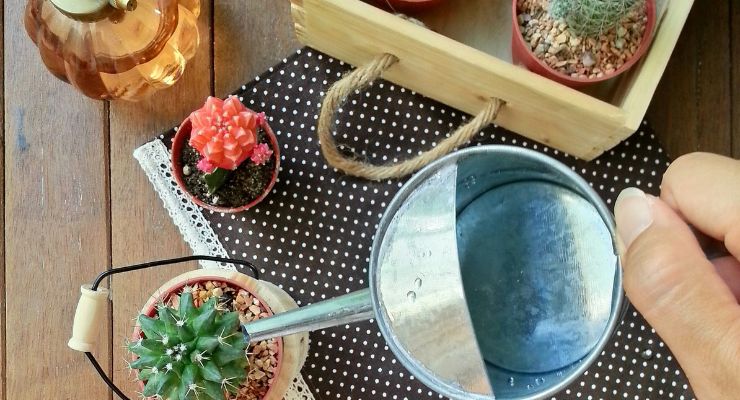
Frequently Asked Questions
What is the ideal cactus soil to prevent root rot?
The ideal cactus soil to prevent root rot is well-draining soil that allows excess water to drain away from the roots. This type of potting soil helps to prevent water from staying in contact with the roots for extended periods of time, which can lead to root rot.
A well-draining cactus soil mix can be made by combining coarse sand, perlite, and peat moss. You can also purchase commercial cactus soil mix at a garden center or online.
What fungicides are effective in treating cactus root rot?
A variety of fungicides can be effective in treating cactus root rot. Some popular fungicides for treating a rotting cactus include neem oil, hydrogen peroxide, baking soda solution, and other products containing the active ingredient captan or myclobutanil.
It is important to follow the manufacturer’s instructions when using fungicides and to always keep safety in mind. Additionally, it’s a good idea to research which fungicides are safe for use on cacti before making a purchase.
Can beneficial bacteria be used to treat cactus root rot?
Yes, beneficial bacteria can be used to treat cactus root rot. There are several types of beneficial bacteria, such as Bacillus subtilis, that can help to control fungal growth and improve soil health and healthy roots.
These bacteria can be added to the soil through the use of specialized products, such as compost teas or probiotic soil supplements. By promoting a healthy soil environment, beneficial bacteria can help to prevent root rot and promote the overall health of the cactus plant.
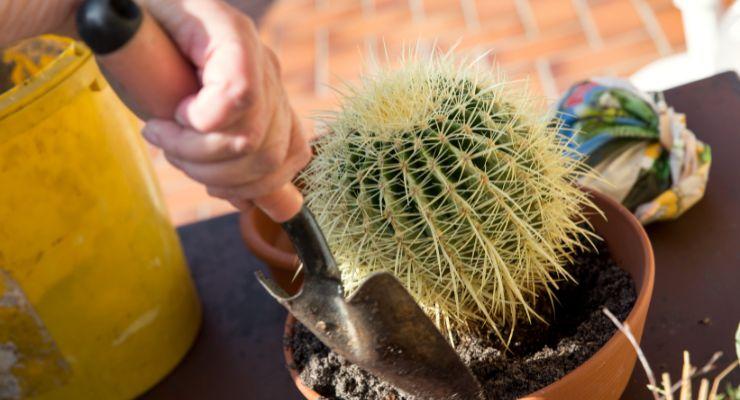
Conclusion
Cacti are resilient plants that can often survive root rot if they’re treated in time. With the right cactus potting mix, proper watering and sunlight, and beneficial bacteria to promote healthy roots, you can save a dying cactus from root rot and help it thrive again.
By taking quick action when your cactus starts showing signs of rotting or distress, you can prevent further damage to the plant and ensure its survival for years to come. Once it’s back on track with absorbing nutrients properly, your cactus will be as strong as ever!
The best way to treat cactus root rot is to take preventative measures. By keeping cacti in a well-draining cactus potting mix and avoiding overwatering, cacti can stay healthy and avoid root rot altogether. With the right steps, you can save cacti from root rot and keep them strong and healthy for years to come.
With the right preventative measures, cactus root rot can be avoided and your cactus will stay healthy and vibrant!
